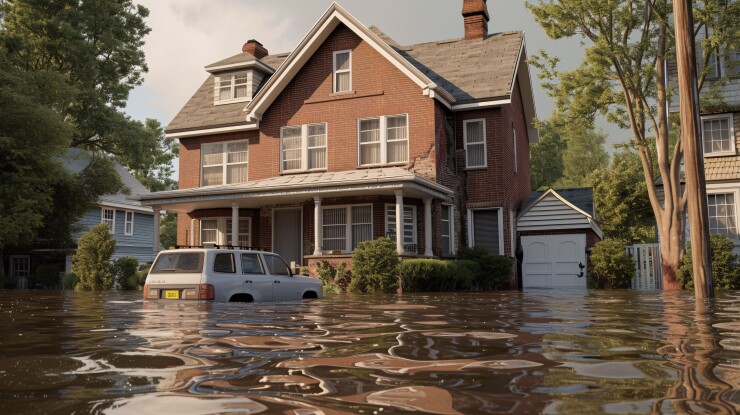
The
These scores subsequently pose a risk related to the devaluation of residential properties for millions of homeowners across the United States including minority and low- and moderate-income, or LMI, homeowners in the path of extreme weather events.
The sheer complexity and scale of this modeling is daunting enough. And even scientists working on these models will confide that while the accuracy of these tools is improving, a wide cone of uncertainty exists as to outcomes such as temperature and sea level change.
Significantly concerning are climate risk scores — not unlike statistically based automated valuation, or AVM, results —
Consider for example the degree of spatial resolution from climate models and the digital elevation models, or DEMs, which are used to project climatological impacts based on topographical and other differences. Climate models carve the Earth into grids of certain sizes, like 90 kilometers on a side. DEMs, meanwhile, provide results at a specific grid area such as 200 meters. Herein lies the problem. Many of the models producing the aforementioned climate scores simply do not have the degree of resolution or understanding of site-specific property elevation to provide a high degree of statistical confidence.
How do automated valuation metrics factor in? AVMs in collateral valuation have become widespread, frequently replacing standard appraisals. AVMs have a high degree of accuracy on properties with homogeneous characteristics such as homes in tract developments, and less so for nonstandard properties such as custom homes or rural housing.
This is where confidence intervals and other metrics come into play to ensure that AVMs are not used when there is a low level of confidence in the results. At the very least, similar metrics would be needed for climate risk scores. But even then, the degree of reliability of climate risk scores is likely to be much lower than that of AVMs.
So, what can possibly go wrong? With social media platforms and blogs fueling interest in climate change, prospective homebuyers will use climate risk scores, along with AVMs or other aspects of the property, to inform their purchase offers. Prospective buyers may decide to move on to another property or lower their offer if they are scared by the climate risk score.
GLS had already stopped issuing first-use plastic as of 2018, but it wasn't enough for the eco-minded German bank. Fake plastic still looks and feels like plastic.
Either way, the impact of climate risk scores on many homeowners' property values could be significant. Most of these scores may accurately reflect climate risk in the general proximity of a property, but the adage "all models are wrong" certainly applies here. Given the number of homes sold each year, the errors resulting in high exposure to climate risk — where that risk is actually lower — could be very large.
Such errors would disproportionately hurt property values of homeowners in designated high-risk climate areas and even more so for minority and LMI homeowners often in areas more susceptible to extreme weather events.
According to the FEMA National Risk Index, or NRI, and 2022 Home Mortgage Disclosure Act data, 21% of properties with loans originated in 2022 to minority borrowers were in NRI "very high" or "relatively high" census tracts across all 18 natural hazards examined by FEMA based on those tracts' expected annual loss. While 17% of white homeowners were in high natural hazard risk areas, the
Providing information to prospective buyers and homeowners on property-level climate risk is a worthwhile objective. However, given the state of climate modeling today, these scores are simply not ready for prime time.
Over time, such climate metrics run the risk of lowering the value of properties for homeowners living in high climate risk areas — especially minority and LMI borrowers — where in many instances the level of confidence of the model at the property level is low.
If such scores do become more ubiquitous in the house selling process, at the very least they should come with a large disclaimer on their use.
We all suffer from shiny object bias that comes from the latest models or algorithms to improve our lives. However, not fully realizing what lies beneath those tools are limitations that introduce significant uncertainty in their application.






